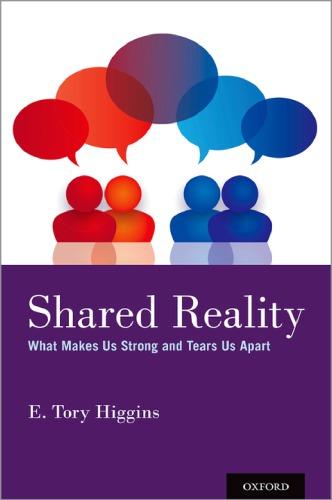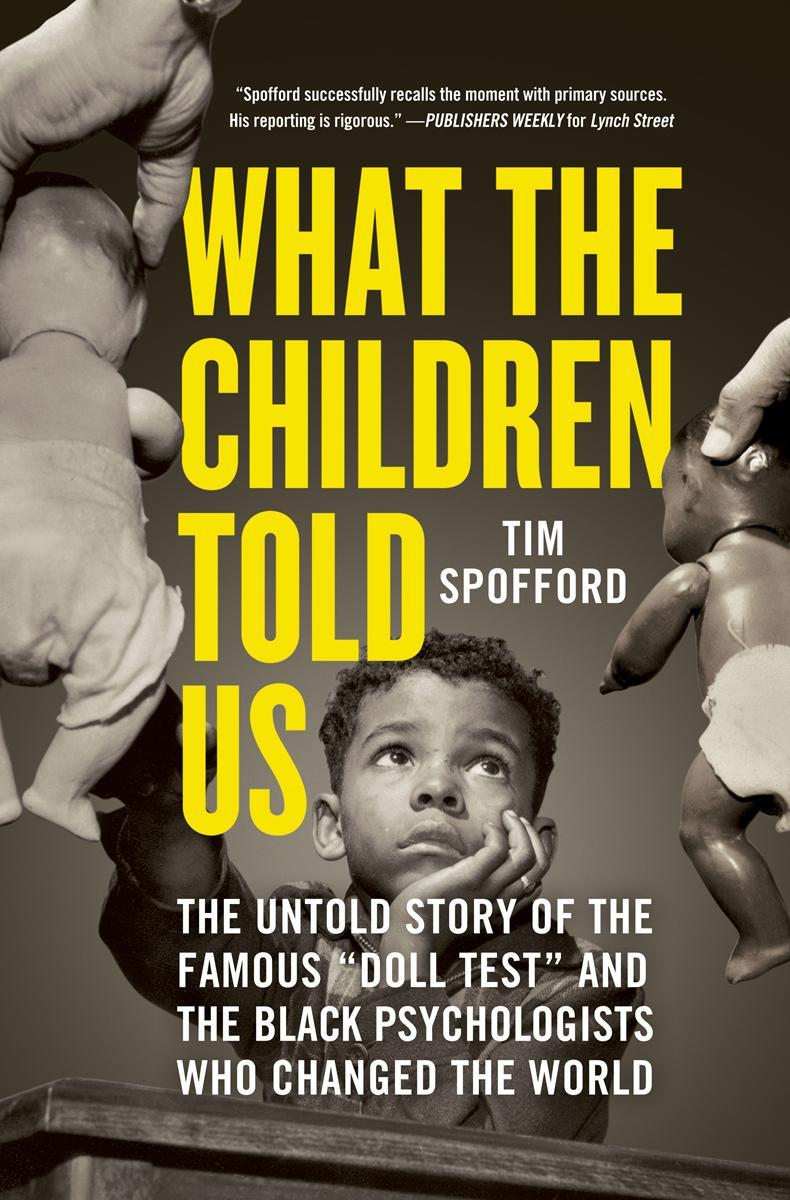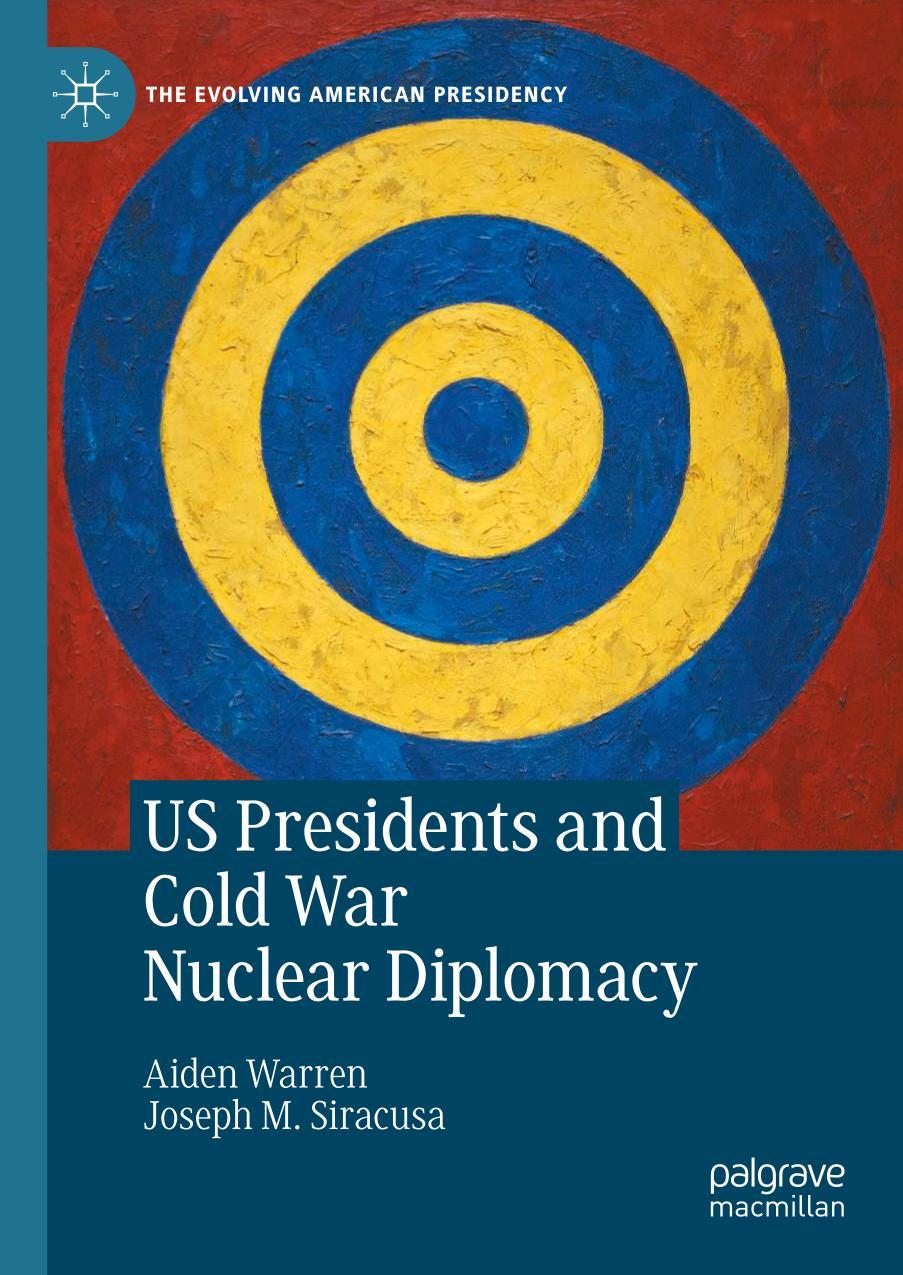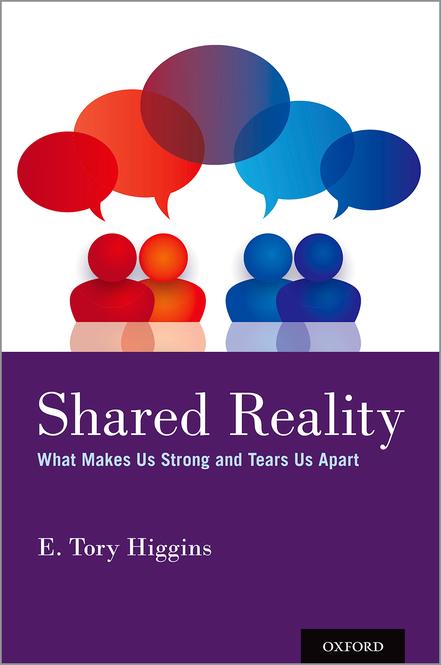Acknowledgments
This book would not have been written without the help and support of friends, family, colleagues, and teachers who contributed to its development in many different ways. It began with Wally Lambert at McGill University who introduced me to the wonders of how language, thought, and society impact one another. I now realize that Wally’s groundbreaking approach to bilingual education was his recognition that learning another language was not so much about learning the grammar or syntax of the new language but, instead, was about wanting to share the feelings, thoughts, and concerns of that new language community. After graduating, I went to London School of Economics and Political Science where I studied with Norman Hotopf. Norman’s version of language, thought, and society was a blend of his doctoral advisor, Bertrand Russell, and his postdoctoral advisor, Frederick Bartlett. Bartlett, especially, was a pioneer in studying shared reality by showing how information is modified when it is shared with others. As a doctoral student in the Department of Social Psychology at Columbia, I worked with Bob Krauss who was a groundbreaker in studying the development of communication. Inspired by his research, my doctoral dissertation examined developmental and social class differences in communication. It was my first research on language, thought, and society.
After leaving Columbia, I began working more on language and thought than language, thought, and society. It took me awhile to take seriously again the society part. But looking back, I recognize how much I was influenced by Wally, Norman, and Bob. I am very grateful to them.
I am also enormously grateful to Gerald Echterhoff. Gerald was a postdoctoral student with Bob Krauss when I returned to Columbia as a faculty member. I had just written a paper reviewing my previous work on communication where, for the first time, I referred to what was happening in my studies as communicators’ creating a shared reality with their audience. Gerald asked me if I had done any new research testing this “shared reality” idea. I told him that I had not. He then asked me if I would be interested in working together on this idea. And, as they say, the rest is history. His contributions over more than a decade, along with his graduate students (especially René Kopietz), have been essential to understanding how shared reality works in interpersonal communication. Thanks, Gerald.
I am also enormously grateful to John Levine. Again, from the beginning, John was excited about the idea of shared reality. We had many wonderful conversations about the nature of shared reality. Not surprisingly, given John’s historical contributions to the social psychology of groups, John taught me
the importance of shared reality beyond just interpersonal communication to social groups more broadly. Fortunately, I had the opportunity to collaborate with him on this broader vision of shared reality. He has also made major contributions to my thinking about shared reality. Thanks, John.
There is one other person to whom I need to give special thanks—Maya Rossignac-Milon. I was very fortunate that several years ago Maya decided that she wanted to come to our Columbia graduate program specifically to collaborate on shared reality. Illustrating “It’s a small world,” Maya had worked with Donald Taylor at McGill University, and he and Wally Lambert were close colleagues and collaborators. Maya’s burning issue has been the relation between shared reality and interpersonal relationships, including how partners experience “merged minds” when they establish a shared reality. I have learned a lot about shared reality over the years from my many conversations with Maya. Thanks, Maya.
I have learned about shared reality in many, many conversations with other students and colleagues—too many to mention them all. I do need to mention the following, however: James Cornwell, Becca Franks, Arie Kruglanski, Federica Pinelli, Bjarne Schmalbach, and Yaacov Trope. I am extremely grateful for the discussions that I have had with them. They have significantly influenced my thinking about shared reality.
This book also benefited greatly from those who provided exceptionally thoughtful and helpful comments and edits. I am extremely grateful to the following friends, family, and colleagues who read and commented on every chapter of the book: Kayla Higgins, Jennifer Jonas, Philip Kitcher, Arie Kruglanski, John Levine, Bill von Hippel, and Robin Wells. Their comments and edits improved the book enormously. I am also very grateful to those who gave me supportive and helpful feedback in the beginning and in the end of the process when I really needed such feedback: Gerald Echterhoff, Matthew Erdelyi, Ran Hassin, Holly Higgins, Harvey Hornstein, Nira Liberman, Maya Rossignac-Milon, Diane Ruble, Yaacov Trope, and Seymour Weingarten. I want to give a special thanks to John Levine who generously reread the entire book at the very end of the writing process because I knew he could make the “finished” book even better. And he did make the book better with his masterful edits. Thanks again, John.
I also want to give special thanks to Joan Bossert from Oxford University Press. Her strong support from the very beginning was critical to this book becoming a reality. I am especially grateful that she volunteered to act as my editor for the book. I feel very fortunate to have had her giving me the feedback I needed to write the kind of book that I wanted to write. I also want to thank Phil Velinov and production editor Sujitha at OUP for their contributions to making this book happen.
My daughter Kayla and my wife Robin are the bookends of my life. I could not have written this book without their support and their wisdom. I dedicate this book to them.
Introduction
“Wish you were here!” Most of us are familiar with this typical message on a picture postcard showing something like a beach at sunset. It first appeared on postcards at the end of the 19th century, and it quickly became ubiquitous. Why? Sometimes the message begins with “having a wonderful time” and then “wish you were here,” suggesting that I wish you could also be having a wonderful time enjoying this beach at sunset. But I think there is more to it than that. In my own experience of “wish you were here,” I wish that my partner or close friend was with me because my experience would be so much better, so much more wonderful. My experience doesn’t seem quite real without sharing it with someone close to me. For my experience to be really real, I need my partner or friend to experience it with me. To be real, I need a shared reality. And this need of mine is only human. Indeed, it makes us human.
This book takes a different perspective on the age-old question of what makes us human. Historically, the answer to what makes us human, what makes us deal with the world in the ways we do, has been that we have a different kind of intelligence than other animals. A very different answer to what makes us human is provided in this book. Yes, humans have a different kind of intelligence than other animals, but we also have a different kind of motivation. The human motivation for shared reality—the motivation to share our feelings, thoughts, and concerns with others—is unique to humans. It is captured in “I wish you were here.” When we are away from others close to us, we wish that we could share our experiences with them. When taking a walk with others, we point to something to draw our companion’s attention to it, just to share what we find interesting. When talking to close friends, we tailor or adjust what we say about something to match their feelings and thoughts about it to have a shared reality with them. And when we do share our experiences with others, what is shared becomes more real. Indeed, the shared reality becomes the truth, the whole
truth, and nothing but the truth, even when, as with our tailored messages, the truth is modified to create a shared reality.
Like human intelligence, human motivation is also special, and by “special,” I mean remarkable. Humans are unique in wanting others to share their feelings, beliefs, and concerns. Like the sunset on the beach, we want to experience that what is relevant to us about the world—what objects, events, and issues are worthy of attention—is also relevant to others. And what we share with others is what we experience to be real. It is a shared reality. This book tells the story of this remarkable human motivation that defines who we are. It describes how this motivation makes us strong. It also describes how this motivation can tear us apart.
The story of our motivation to share reality with others is a story that we all need to know because this human motivation has both essential benefits and major costs for humans. On the upside, our motivation to create shared reality with others is critical for how we coordinate, cooperate, and relate to one another in our families, friendships, and communities. We even see this motivation in the behavior of human infants. They want to share with us what they find interesting and relevant by pointing to it and trying to get us to pay attention to it and appreciate that it is worthy of attention. They also look to us (i.e., check with us) to learn whether they should respond positively or negatively to some event or object. Historically, creating shared realities has been an essential part of the societies and cultures that humans have developed. It is the motivation for learning from others what they know that we do not and for teaching others what we know that they do not. It provides our basic connection to others and our feeling of belongingness with others. By creating shared realities with others, we come to know the truth about the world, that is, what is real about the world. Shared realities make the world meaningful to us. These benefits from shared reality are basic to who we are as humans.
Our motivation to share reality with others, however, also has major costs for humans. When we create shared realities with our fellow group members, these shared realities become the truth about what to feel and what to believe, and any other group to which we do not belong that has different feelings and beliefs about the world—whether it is a different ethnic group, religious group, or political group—is a group we distrust and even fear. They don’t have “alternative facts” or simply a different viewpoint: They have false beliefs and dangerous feelings. We are right and they are wrong, and they must not be allowed to prevail in the marketplace of ideas. In this
way, our motivation to create shared realities with in-group others but not out-group others leads to intergroup hatreds and conflicts from which millions of people have died. This major downside of shared reality is seen in current political conflicts that have poisoned public discourse and caused great suffering around the world.
Thus, our motivation to create shared reality with others not only reflects the best of us. It also reflects the worst of us. There is not a separate human motivation that is good and another that is bad. There is a singular motivation to share reality that has both upsides (helping in-group members) and downsides (attacking out-group members). Given this, it is important that we all know what exactly this motivation is and understand how it works and how it plays out in our everyday lives. The purpose of this book is to tell this story of the human motivation to create shared reality with others.
The shared reality story of human motivation is very different than the usual answer to the question, “What makes us human?” The usual answer highlights our intelligence, with our unique use of language often being cited as the prime example of our special superior intelligence. The different versions of this answer are typically some form of “Yay us!” After all, we’re only human. When it comes to motivation, however, humans are not so sure that our motivations are superior to those of other species. Indeed, psychologists and other scientists have historically argued that our basic motives are the same as those of many other animals, including rats and pigeons. And, unlike our intelligence, we are not always proud of our motivation. We are not proud of aggression toward members of our own species, including killing innocent children. When this happens, you don’t hear “Yay us!” Perhaps that’s why we don’t want to talk about motivation as what makes us human.
The potential downside of human motivation highlights another difference between the shared reality version of the story and the human intelligence version of the story. Discussions of how human intelligence differs from the intelligence of other animals typically emphasize the advantages we derive from our higher intelligence, such as our use of superior tools, our laws and ethical principles, our different forms of art, and our use of language. We even decided to distinguish our species from other species in the genus “Homo” (and other hominids) by calling ourselves “Homo sapiens”—Latin for “wise man.”
But should it be our special intelligence that we emphasize when trying to understand what makes us human? That isn’t clear. After all, it is not clear
that when Homo sapiens and Neanderthals evolved from a common ancestor about half a million years ago, Homo sapiens were more intelligent than Neanderthals. It has been suggested that we might even have been less intelligent (considering brain size, for instance). Something other than intelligence, then, could have given us an advantage. And whatever that was— and I suggest that it could be the ways in which we create shared realities with others—it was the difference between our surviving as a species while all other hominids, including Neanderthals, did not. It was, and is, a critical part of who we are and why we survived. Rather than just our intelligence, our motivation to create shared realities with others was critical for how we cooperated and coordinated with each other in uniquely human ways. As we will see, infant human children in many ways are less intelligent than adult chimpanzees, but they want to share with others what they find relevant and interesting in the world in a way that chimpanzees do not.
In addition, if we are so intelligent and wise, and our intelligence and wisdom are such good things, why do we as members of different religious or political groups struggle simply to get along with each other or even listen to each other? Why do we as individuals suffer from so much depression and anxiety? What is the superior intelligence part of the human story not telling us about what it means to be human? And if there is something else, basic to who we are, that explains our downsides as well as our upsides, then we need to identify it and understand how it works. Only then can we do something to make our human lives better. And there is something else: our motivation to create shared realities with others. This motivation reflects the best of us and the worst of us. It has led to great cultural achievement and to great wars and to self-sacrifice to save the children of others and to self-sacrifice to kill the children of others (think suicide bombers).
When I say that the motivation to create shared realities with others is a critical part of the story of being human, I am arguing that it is a universal human motivation that underlies what we feel, what we believe, what we strive for, and how we relate to one another in ways that make us different from any other animal. And this shared reality story about being human, this motivational story, is not the same story as saying that humans have greater intelligence than other animals. Imagine that there are two animals from the same family sitting together and looking around. If they are animals that have arms and can make sounds, it does not take high intelligence for one of them to raise its arm and point at something it sees while uttering a sound to attract the attention of the other. Even six-month-old
human infants do this. They notice something that they find interesting and then point to it while uttering something like “Ooh ooh!” It doesn’t take an Einstein to do that. As far as intelligence goes, it’s not that impressive. But here’s the point. Other primates don’t do that. They don’t try to create joint attention to something just because they find it interesting. It’s not that they can’t do the pointing and utter something to draw attention to what they are looking at. It’s just that they are not motivated to do that. Human infants want to share with another what they find interesting. For other primates, this simply doesn’t matter. It is a difference in motivation, not a difference in intelligence.
What you might also have noticed about this example is that what human infants are doing here is not about language either. Uttering “Ooh ooh!” is not language. In fact, infants can and do get caretakers to look at what they find interesting without uttering anything at all, as when my infant daughter would grab my shirt and point excitedly at something while checking whether I was looking in the same direction. And when I did and then smiled, she would smile broadly. When human infants share their interest in things with others during the first year, it is part of a more general phase in which they share feelings with others, which includes learning from others what to feel positive about and what to feel negative about. It is the beginning of human children creating shared realities with others in ways that do not happen with other animals. It is so common among human infants that it can be taken for granted. No big deal. But it is a big deal because it makes us human and not some other animal. And it begins early on in children’s development, well before symbolic development or other manifestations of higher intelligence.
One of my inspirations for writing this book is to tell the story of how children develop as humans by acquiring new forms of shared reality with others (Chapters 2 and 3). As infants grow (6–12 months), they begin to share feelings with their caretakers, such as sharing their excitement about something they see by pointing to it. Then as toddlers (18–24 months), they share social practices, such as sharing with others the eating practices of their community. Next, as older preschoolers (3–5 years), they share the goals and standards that their significant others have for them, such as sharing with their parents what they should try to achieve. In the final phase of shared reality development, school-aged children (9–13 years) learn social roles and coordinate their roles with others who are fulfilling complementary roles, such as sharing with other members of a sports
team what is expected of those playing the different roles. Each of these new forms of shared reality has significant consequences for what children do and how they do it. Children benefit greatly from acquiring these new forms of shared reality, but there are potential costs as well—the trade-offs of being human.
In addition to the story of shared reality during childhood development, there is also the story of what happened in the evolution of our species. This story is important because it sheds light on where our motivation to create shared reality with others came from. For example, I discuss in Chapter 4 how our being bipedal contributed to our newborns being unusually weak at birth and how the exceptionally long period of dependency for human children could have created an evolutionary selection pressure on human children to share the feelings, thoughts, and concerns with their caretakers to receive the help they needed to survive.
How does the development of shared reality in humans play out in everyday life? This is the primary focus of the book. I will describe how shared reality impacts our being human, as revealed in what we feel (Chapter 5), what we know (Chapter 6), our sense of self (Chapter 7), what we strive for and value and how we strive (Chapters 8 and 9, respectively), our attitudes and opinions (Chapter 10), and how we get along (Chapter 11). I begin with how adults use interpersonal communication to create shared realities with others (Chapter 1). I begin with this part of the story because interpersonal communication is basic to how humans create shared reality with each other and because it clearly demonstrates how our shared realities, whether actually true or not, are treated as the truth. During our day-today interactions with others, we communicate to them about what is happening in the world, and when we do, we tailor or adjust what we say to them to match their feelings and thoughts about what is going on. Because we tailor what we say to our communication partners to create a shared reality with them, what we say is often distorted or biased. But it is this shared reality that is now treated as the truth. It becomes what we believe and what we remember. Our shared realities become the world we live in and know: Sharing is believing. And with tight networks of people talking just to each other, these shared realities are the DNA of our social bubbles.
Sharing Is Believing
You go to a party and meet a guy named Michael for the first time. During the party, you observe how Michael behaves. Later you are talking to a friend who you know is in the same club as Michael and so you mention that you met him for the first time at the party. Your friend says, “Oh . . . I don’t really like Michael very much. What was your impression of him?” If you are like me—and most people—what you say next will be influenced by knowing that your friend has a negative impression of Michael. It is likely that what you say about Michael will move in the evaluative direction of your friend’s feelings about him. This means characterizing Michael in a more negative manner than you would have otherwise. And that’s what most of us would do. The question is: What do we later remember about how Michael actually behaved at the party? To answer this question, let’s step back and consider what psychology tells us.
Seeing is believing. That’s what we’re told—and have been told for a very long time. It is a saying that goes back hundreds of years. It argues that only evidence that is physical or concrete can ever be truly convincing to us. Within social psychology, Leon Festinger, a father of modern social psychology, distinguished between physical reality, which is information about something in the world that is provided by our own physical experience of that thing, and social reality, which is information about something in the world that is provided by other people.1
Consistent with “seeing is believing,” Festinger argued that physical reality trumps social reality. Social reality can matter, but only when the information from physical reality is unclear. Much of the time, our own observations would be our primary source of information. If we personally observed something, like Michael’s behaviors at the party, then that is the truth about it. Only when we are uncertain about what we observed do we check with others about how we should characterize it. Yes, in trying to be polite on some topic or to be sensitive to someone’s feelings on a topic, like our friend’s impression of Michael, we might describe what happened differently to match that person’s opinion on the topic. We might say
something different depending on our audience. However, what we really believe remains unchanged. We saw what we saw, like Michael’s behaviors at the party, and we believe what we saw regardless of what we said. After all, “seeing is believing.” But what if that’s not the case? What if what we said, rather than what we saw, turns out to matter—even when what we said does not match what we saw? What if there is a “saying-is-believing” effect rather than a “seeing-is-believing” effect?
I began my college education at McGill University in Sociology–Anthropology. My burning issue then was how language, thought, and society influence each other. I was a fan of Benjamin Lee Whorf’s “linguistic relativity” idea (also called the Whorfian hypothesis) that the languages from different societies each shape the world view of the members of each language community. Simply put, the grammatical structure of the language you speak influences what you perceive and what you think.2 Each of us lives in a world that our local language shapes for us.
From this Whorfian perspective, which is very different from the “seeingis-believing” perspective, I experience a world that my language, English, creates for me rather than the world given to me by my senses. As a graduate student at Columbia University, I tried to test this idea by creating my own novel language with its own grammar that classified objects differently than English grammar. My research showed that participants could learn to classify objects differently after learning the new language. Unfortunately, after all my effort on this project, and despite the research being successful, I began to think that it did not mean much. It was like the participants were simply solving a problem I had given them. It wasn’t changing what they knew or felt about something in the world.
When I left Columbia to begin my academic career at Princeton University, I began to think that it was the wrong aspect of language that had received attention regarding how language, thought, and society influence one another. Perhaps it wasn’t language structure (syntax or grammar), or even language semantics (word or phrase meanings), that had the major impact in shaping our world views. Maybe what really mattered was language use, the particular ways that humans take action when we communicate to each other to achieve our goals—what has been called the pragmatics of language. The distinguished philosopher Ludwig Wittgenstein spoke of the “language game” to emphasize that words are used within a general framework of actions. In the 1950s, eminent sociologists in the area of symbolic interactionism, such as Erving Goffman and Harold Garfinkel, argued
that interpersonal communication is a kind of game where the players follow the rules that are dictated by their communication roles.3
The roles in the communication game are the speaker role and the listener role, and participants in the communication game typically switch back and forth between these roles while always taking the other role into account as they play each role. It is not about language structure or syntax. It is about coordinated social interaction where there are shared roles and shared rules that are taken into account when making action choices to achieve some goal. Of special interest for the Michael example are the rules of the game that speakers (or writers) must follow.4
Rules for the Speaker Role
(1) Speakers should take into account the characteristics of their audience.
(2) Speakers should produce a message that is appropriate to their communicative intent or purpose.
(3) Speakers should convey the truth as they see it.
(4) Speakers should try to be understood (be coherent; be comprehensible).
(5) Speakers should give neither too much nor too little information.
(6) Speakers should be relevant (stick to the point).
(7) Speakers should produce a message that is appropriate to the context and circumstances.
In general, speakers do try to follow these rules when they communicate. When they do, what happens later? This was the question that interested me. When speakers follow the rules, what happens to them downstream? Is there a “seeing-is-believing” effect or a “saying-is-believing” effect? Note that if we have a “saying-is-believing” effect, it would not be what Whorf was talking about. It would not be that the syntax used by the speakers structured their thought. It would be language pragmatics rather than language syntax. It would be that speakers, following Speaker Rule #1, produce a message on a topic that takes into account the characteristics of their audience, such that the message based on the same information on the same topic would be different for audiences who had different characteristics. The
speakers’ messages would each be tailored to suit the specific characteristics of their particular audience, and, thus, the messages about the same information would be different for the different audiences. This is the case when we characterize Michael’s behaviors more negatively than we would otherwise to suit our audience’s negative impression of Michael.
But that’s just the message you say. Message, schmessage. Given that all speakers saw exactly the same information, if speakers were later asked to recall the original information on the topic (exact “word-for-word” recall instructions), then, supposedly, a “seeing-is-believing” effect would be revealed. All speakers would basically remember the same information regardless of their following Speaker Rule #1 and tailoring their message toward the characteristics of their particular audience.
But, again, what if this is not the case? What if, instead, the speakers’ own personal memory of the original information was influenced by what they said? What if their memory was biased away from the original information toward their audience-tailored message? This would reveal a “saying-isbelieving” effect rather than a “seeing-is-believing” effect. And this effect on memory would not derive from Whorfian-like syntax. It would derive from communicators following the rules of their speaker role about how to use language when interacting with others (i.e., from pragmatics). It would be a Whorfian-like idea appearing in the form of pragmatic language use rather than in the form of syntax. As I once said years ago in a conference talk on this topic, it would represent a “Whorf in sheep’s clothing.”
The Golden Rule for Speakers
I decided to conduct a study to test for this “Whorf in sheep’s clothing” when I arrived at Princeton. The topic was the evaluatively ambiguous behaviors of a person named Donald, such as the following ambiguous persistent–stubborn description of Donald: “Once Donnald makes up his mind to do something it is as good as done, no matter how long it might take or how difficult the going might be. Only rarely does he change his mind even when it might well be better if he did.”5
The participants in the study were all assigned to the role of communicator, and they were asked to describe Donald’s behaviors to an audience. In this role, they needed to follow Speaker Rule #1: Speakers should take into account the characteristics of their audience. In this case, the characteristic
of their audience that communicators needed to take into account was the audience’s attitude toward Donald—an audience who knew Donald from being in the same club at Princeton. The communicator participants learned that their audience either “kinda liked” Donald or “kinda disliked” Donald. Given this information about the audience’s attitude toward Donald, did these Princeton students follow Speaker Rule #1?
Yes, they definitely did. They labeled Donald’s behaviors with more positive than negative trait names when the audience “kinda liked” him (e.g., “persistent”) and with more negative than positive trait names when the audience “kinda disliked” him (e.g., “stubborn”). And what we discovered from many studies over the next decades is that it is rare for people not to follow Speaker Rule #1. It could be called the Golden Rule for communicators.
Because communicators almost always follow the Golden Rule, they will bias their characterization of Donald’s behaviors to match their audience’s attitude toward Donald, which means they will fudge Speaker Rule #3: Speakers should convey the truth as they see it. But most of the time communicators are not aware of fudging Speaker Rule #3. They believe they followed that rule even when they changed what they said about Donald to match the audience’s attitude toward him. This is because what they said to match the audience became the truth to them. It became the truth because they were motivated to create a shared reality with their audience through what they said in their message. That’s what mattered.
What we found in this original study is that communicators follow the Golden Speaker Rule #1, which we call audience tuning. But this is not all that we found. We also found that, by so doing, the communicators’ own subsequent memory and evaluations of the target person information became biased in the evaluative direction of their audience-tuned message. Moreover, these evaluative biasing effects on subsequent memory and attitudes did not weaken over time. If anything, they got stronger over time. It is as if their beliefs and feelings about the target person become what they said about him rather than what they saw (i.e., read) about him. What they said about Donald to evaluatively match their audience’s attitude was what became the truth about Donald—it was a shared evaluation that they had created with the audience. Because of this, the communicators’ memory of Donald’s behaviors was reconstructed to fit this shared evaluation rather than to match what they had originally read about Donald’s behaviors. It was not the actual truth about Donald’s behaviors—not “seeing-is-believing.” It
was the truth created by tuning their message to their audience’s attitude. This is why I called this effect “saying is believing.”
What Causes the “Saying-Is-Believing” Effect?
The “saying-is-believing” effect is important because we follow Speaker Rule #1 all the time. And when we follow this rule in our everyday life, we treat our message as if it also followed Speaker Rule #3. That is, we treat our message as if it conveyed the truth on the topic. And, not surprisingly, this truth on the topic, our truth, then shows up in our memory and attitudes on the topic. What is happening is that we create a shared reality with our audience about the message topic—in this case, the target person Donald. And the shared reality makes this truth the whole truth and nothing but the truth; that is, we experience it as the objective truth.6
But how do we really know that this is what is going on, that creating a shared reality is what causes the “saying-is-believing” effect? Could it be something else that is happening? Actually, when I conducted my first study at Princeton I was thinking about a “Whorf in sheep’s clothing,” but I was not yet thinking about shared reality per se. As a social-cognitive psychologist at the time, I had a different mechanism in mind than shared reality. There was a substantial literature showing that how one labels an ambiguous figure influences how one later remembers it. For example, if there is an ambiguous figure that looks a little like eyeglasses and a little like an exercise dumbbell, then naming it either “eyeglasses” or “dumbbell” will cause distortions in memory reproductions in the direction of the name, such as the reproduction looking more like prototypic eyeglasses when it was named “eyeglasses.”7
Indeed, at the same time that I was conducting research on the “sayingis-believing” effect, I was also conducting research on what happens to judgment and memory when someone earlier is unobtrusively exposed to a word: the effects of verbal priming. The research showed that when participants in an initial study were exposed to one or another word, such as either the word persistent or the word stubborn, then in a later (ostensibly “unrelated”) study, their judgments and memory of a target’s ambiguous behaviors were evaluatively biased toward the primed word. My research on the biasing effects of verbal priming used the same ambiguous Donald behaviors as my research on the “saying-is-believing” effect. And, notably,
participants did not consciously remember the priming words from the initial “unrelated” study.8 My verbal priming research, then, made me think of a different, cognitive mechanism as underlying the “saying-is-believing” effect.
From a strictly cognitive point of view, one could argue that the communicators in the “saying-is-believing” study would have two different mental representations for the information they had received about Donald’s ambiguous behaviors. They would have a representation of the original information they had read about Donald’s behaviors, and they would also have the message’s evaluative labeling of that information. Given the known effect of labeling on memory, it was possible that the communicators’ reconstruction of the original information was distorted toward the evaluative summary contained in the message. It would still be a “saying-is-believing” effect, but there would not be a shared reality mechanism underlying it. It would be a strictly cognitive mechanism—verbal priming.
For a long time I was satisfied with the “verbal priming” explanation for the “saying-is-believing” effect. And I might have remained so except for serendipity. I was asked to give a keynote address for an international conference on language, thought, and society—yes, my first love from college. I learned that there would be another keynote address at the conference, which would be given by Roger Brown who wrote the classic book, Words and Things.9 This was a brilliant book among other brilliant work that he had written, and he was one of my heroes. Because he might hear my talk, I felt that I needed to do as good a job on my talk as possible. So I reread all of my research, and others’ research, that had investigated the “saying-isbelieving” effect. And I reread it with a critical eye, and, more important, with a fresh eye. In so doing, I became dissatisfied with the “verbal priming” explanation for the “saying-is-believing” effect. I thought more seriously about the “communication game” that I had studied years earlier.10 What was the goal of the communicators? I decided that their goal was to create a shared reality with their audience about the target person. This new perspective was reflected in the title of my talk: Achieving “Shared Reality” in the Communication Game: A Social Action That Creates Meaning.11
From a cognitive perspective, what matters is that communicators produce, from audience tuning, an evaluatively biased message about the target person. That message would then bias reconstructive memory. From a shared reality perspective, however, it is not enough that communicators
tune their message about the target person to match evaluatively the audience’s attitude toward him or her. It is not only about the message itself. It is also about why communicators tune their message to match the audience’s attitude. What was the goal of the audience tuning? Was it to create a shared reality with the audience or not? According to the shared reality perspective, for the audience-tuned message about Donald to be treated as the objective truth about Donald, it is necessary that the communication goal be to create a shared reality with the audience.
Because people’s motivation to share reality with others is so strong, they typically tune their message toward an audience’s attitude to create a shared reality with their audience about the topic at hand—in this case, what Donald is like as a person. But communicators can be motivated to tune their message toward their audience’s attitude for other reasons as well. They might just want to be polite. They might have an ulterior or instrumental motive, like wanting to agree with their audience so that the audience will like them or to avoid conflict with their audience. They might take their audience’s attitude as an opportunity to have fun by exaggerating what they say in the direction suggested by that attitude.
It doesn’t matter from a cognitive perspective what the goal of the audience tuning might be. What matters is that the message representation is an evaluatively biased representation, and if it is, it should evaluatively bias memory. From a shared reality perspective, however, it does matter what the goal of the audience tuning is. What if the goal was not to create a shared reality with the audience? What if the goal of the audience tuning was simply for communicators to win a prize for successfully adapting their message to match the audience’s attitude? If so, then the message would not be experienced as being the truth on the topic, and the “saying-is-believing” effect should be weakened or even eliminated. Thus, the cognitive perspective and the shared reality perspective make different predictions about what would happen when goals for audience tuning are introduced other than wanting to create a shared reality with the audience.
A study was designed to test directly the effects of audience tuning on memory when the goal of audience tuning is other than creating a shared reality with the audience.12 It tested what happens when the goal of audience tuning, instead of being to create a shared reality with the audience, is strictly instrumental (ulterior incentive) or is just to have fun (entertainment). Participants in the instrumental condition learned that they could benefit from tuning their message toward their audience’s attitude. They
were told that those communicators who adapted their message to suit the perspective of their audience would be identified, and three among them would be randomly selected to receive a monetary reward equivalent to about $20 at the time of the study. Participants in the entertainment condition learned how they could have fun by tuning their message toward their audience’s attitude. They were told that they should try their best to amuse their audience by exaggerating how much they adapted their message to their audience’s attitude.
The communicators in the study were randomly assigned to either the instrumental goal, the entertainment goal, or the standard shared reality goal conditions. Importantly, for all of these goals, the communicators significantly tuned their message toward the attitude of their audience. The Golden Rule for speakers was followed in every condition. Indeed, not surprisingly, the communicators in the instrumental goal and entertainment goal conditions tuned toward their audience significantly more than the communicators in the shared reality goal condition; in other words, the messages were even more evaluatively biased. From a cognitive perspective, then, the audience-tuned messages should have an even greater effect on evaluatively biasing communicators’ memory, an even greater “saying-is-believing” effect. But this is not what was found. In fact, in these conditions the “saying-is-believing” effect was eliminated! It was eliminated because the goal of the message tuning was not to create a shared reality with the audience and thus the message was not treated as being the truth. In contrast, in the standard shared reality goal condition where the message is treated at the truth, the usual “saying-is-believing” effect was found.
When “Saying Is Not Believing”
So even when communicators tune their message to suit their audience, a “saying-is-believing” effect is not necessarily found. It is not found when communicators do not have the goal of creating a shared reality with their audience. In the previous case, their goals were, instead, instrumental and entertainment goals. There are other reasons as well why communicators might not have the goal of creating a shared reality with their audience. The previously discussed studies all involved communicators producing a message for an audience who was a member of their own in-group.
What happens when the audience is a member of an out-group for the communicator?
In one study addressing this issue,13 the communicators were students at the University of Cologne. Before the study, a pretest was conducted to determine which of several different groups the Cologne students would experience as an out-group, as indicated by their having low ratings of perceived similarity to them and low liking of them.14 Based on this pretest, trainees from a nearby vocational school for hairdressers were selected as being an out-group audience for the Cologne communicator participants. In the in-group condition, the audience was as usual a student from the same university as the communicator (i.e., another Cologne student). All communicators were told that their audience presumably knew the target person quite well because the audience and the target person were volunteers in the same research project. As in previous studies, the communicators were also told that the audience “kinda liked” or “kinda disliked” the target person.
The study found that there was no difference between the in-group and out-group audience conditions in the extent to which communicators evaluatively tuned their message to match their audience’s attitude toward the target person. For both the in-group audience and the out-group audience, communicators significantly tuned their message toward the audience. That is, presumably out of politeness, the communicators with an out-group audience still followed the Golden Rule for speakers.
This meant that the messages were evaluatively biased to the same extent in both conditions. Thus, from a cognitive perspective there should be a similar “saying-is-believing” effect on memory in both conditions. But this was not what was found. The usual “saying-is-believing” effect on memory was found for the in-group audience, but it was eliminated for the out-group audience.
Why was the “saying-is-believing” effect on memory eliminated in the out-group audience condition? The study included a measure of how much the communicators trusted the audience’s judgment of others: “Do you think that [name of the audience] is a person whose judgment about other people one can trust?” Communicators trusted the audience’s judgment of others significantly more when the audience was an in-group member than an out-group member. If your audience’s judgment about others is not trustworthy, then you can’t trust his or her attitude about the target person. And if you can’t trust the audience’s attitude about the target person, then
you can’t trust your message that you tuned to match this attitude. A message about the target person that is untrustworthy is a message that is not the truth about the target person. If the message about the target person is not the truth, then it is not relevant when recollecting the target person’s behaviors.15 This is why the “saying-is-believing” effect on memory was eliminated in the out-group audience condition. Indeed, an additional analysis showed that the memory bias depended on trust in the audience.
Subsequent research involving out-group audiences, such as German students communicating to a Turkish audience, found the same result as this study.16 The communicators do evaluatively tune their message to match their out-group audience’s attitude toward the target person, but their subsequent memory is not affected by their tuned message; that is, there is no “saying-is-believing” effect. This is an important lesson for how shared reality can work. When people consider a person to be a member of an out-group, they like the person less and trust the person less. The (unconscious) psychologic is something like the following:
I will tune my message toward this audience person because following Speaker Rule #1 is good manners and I am a polite person. But I do not want to create a shared reality with this person. My tuned message is not a shared reality with this person. Therefore, it is not the truth. Not being the truth, my message is not relevant for remembering the information I was given about the target person.17
This is a sad story about what it can mean to be human. When interacting with out-group members, we can behave politely toward them while all the time considering them to be irrelevant to us as either someone to connect with (the relational motive of shared reality) or someone to learn from (the epistemic motive of shared reality). With no shared reality being created, the interaction is treated as meaningless. It is as if the other person doesn’t matter or doesn’t really exist. Given our strong, natural motivation to create shared reality with other humans, not doing so when interacting with members of an out-group is like treating them as being nonhuman. We want to create a shared reality with members of our in-group but not with members of out-groups.
This is a form of ethnocentrism. The results of these “saying-is-believing” studies show that communicators tune their message to match the attitude of both in-group and out-group audiences, but their message only affects
their memory—only is treated as truthful when the audience is an ingroup. These studies provide a new kind of evidence for how ethnocentrism functions. The elimination of a “saying-is-believing’ effect with an out-group audience is an unconscious (implicit) measure of ethnocentrism. It measures not wanting a shared reality with the audience simply because that audience is an out-group member.
These studies also raise the question of what it means to treat other people with dignity. Is it enough to be “polite” when you talk to others? Is it enough to show “tolerance” by not arguing with others and tuning what you say to their attitude on a topic? You can do this, but if you are not motivated to find a shared reality with them, to question and explore where you might have feelings or beliefs in common, then you are treating them as if they don’t really matter.
What does this all mean for the “saying-is-believing” effect? These outgroup audience studies, like the studies where the goal of the audience tuning is not to create a shared reality with the audience, show that it is not always the case that communicators believe what they say. With outgroup audiences and goals other than shared reality, the saying still happens (i.e., the communicators evaluatively tune their messages to the audience), but the believing does not happen (i.e., the communicators’ memory of the target person’s behaviors does not match the evaluative tone of their message). And this is because the communicators do not create a shared reality with their audience. For “saying-is-believing” to occur, a shared reality needs to occur. Thus, from the perspective of shared reality, the phenomenon is not really “saying-is-believing,” any more than it is “seeing-isbelieving.” Instead, the phenomenon is “sharing-is-believing.”
There is an important implication of the phenomenon being “sharingis-believing” rather than “saying-is-believing.” It means that the experience of sharing should matter. Specifically, manipulations of the social experience could make the “sharing” appear where it did not exist before, which could make the “sharing-is-believing” effect appear where it did not appear before. Thus, it might be possible to find a way to make the message a shared truth between the communicator and the audience where it was not before—even for an out-group audience. In this way, an out-group audience could become someone whose feelings and beliefs are worthwhile, and the communicator’s message that was tuned to that audience would now be worth believing. If so, then “sharing-is-believing” could now appear with an out-group audience. Let’s see next how this can happen.
“Sharing-Is-Believing” with Out-Group Others
Let’s consider again the out-group audience effects. The basic finding is that the “saying-is-believing” effect on memory does not occur when the audience is an out-group member despite the fact that the communicators did tune their message to match the attitude of that audience. How might the conditions of these studies be changed to produce the “saying-is-believing” effect by creating the “sharing-is-believing” effect? The answer is to change the social conditions in a way that changes the shared reality motives of the communicators. This could be done either by changing the social relationship between the communicator and the audience or by changing the perceived epistemic authority of the audience about the message topic (i.e., the target person).18 There are studies that have examined the effect of each of these kinds of changes.
Changing the Relationship between Communicator and Audience
The social situation in many of the standard “saying-is-believing” studies is rather impersonal. It involves three roles—the experimenter, the communicator, and the audience. The role of the communicator is to send a message about the target person’s behaviors to the audience (without mentioning the target’s name), and the audience’s role is to identify whom the message is about—a referential communication task. In some studies, the experimenter also provided feedback to the communicator about whether the audience did or did not succeed in correctly identifying the target person.
In this social situation, the only relationship between the communicator and the audience was the group membership information provided by the experimenter, which signaled that the audience was either an in-group member for the communicator or an out-group member for the communicator. What would happen if, instead, there was more of a person-to-person social relationship between the communicator and the audience? What if the communicator felt that the audience was not just playing a particular role in a referential communication task but was a team partner?
This was the social situation that was created in a new version of the outgroup audience study.19 The basic study paradigm was the same as described earlier with German communicators sending a message about a German











